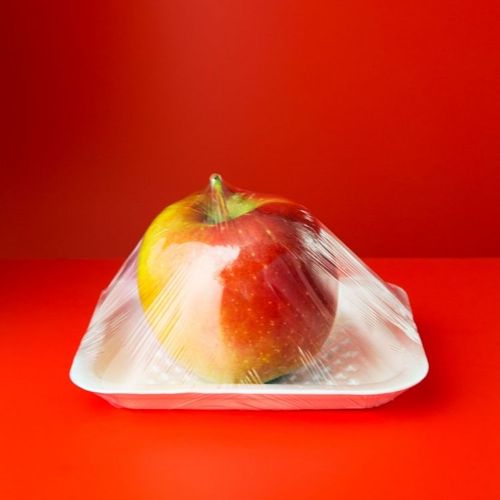While you may not be able to avoid plastics altogether, you can minimize your risk. Self-defense...
Do not put plastics in the dishwasher or microwave. High heat accelerates the migration of chemicals out of household plastics, such as food containers and spatulas. You know the plasticky smell that wafts from a plastic container that is fresh from the dishwasher or microwave? That is the odor of chemicals escaping.
Caution: Do not assume that products labeled "microwave safe" truly are safe-this label means only that the plastic won't melt in the microwave .. .it does not mean that it is chemical-free.
Don't let plastic wrap touch food. Even at room temperature or in the refrigerator, Saran type wraps potentially can release chemicals into the foods they touch. I recommend seeking alternatives to clear plastic wraps (such as foil or glass containers)... or using plastic wrap only to cover containers... or wrapping food in a paper towel or waxed paper before putting it into a plastic bag.
Note: A "wet" food is more likely to absorb toxic chemicals than a "dry" one.
Freeze safely. Cold is less likely than heat to accelerate the migration of chemicals from containers into food. However, even very low levels of BPA can produce profound changes in the body. The longer a food is in contact with any BPA-containing plastic, the greater the risk of exposure, even when frozen.
Recommended: Freeze foods in wide mouth, dual-purpose, glass jars made for freezing and canning.
Replace the plastic you use most often. Once you realize how much plastic you have in the kitchen, it's tempting to give up on getting rid of it all-so a good first step is to find safer alternatives for the plastic things that you use regularly.
Examples: I replaced my plastic ice cube trays with metal trays, the old-fashioned kind with a lever to loosen the cubes. I use wood cutting boards instead of plastic. When I pack my lunch, I include a reusable bamboo spork, a spoon-and-fork combination.
Discard damaged containers. We all have our favorite storage containers that are the perfect size and shape, and we tend to hang on to them even when the lids no longer fit right and the sides are warped. But damaged plastic is breaking down... and when this happens, chemicals are released. If you can't give up all your plastic, at least don't use damaged items.
Be wary of "BPA-free" plastics. Some companies have developed plastics that don't contain BPA. Unfortunately, other chemicals in plastics may be just as risky.
Example: Some BPA-free containers use plastics made from structurally related compounds, such as bisphenol-AF or bisphenolS. Are they safer? We don't know-but recent studies suggest that bisphenol-AF actually may be more dangerous. Until we know more, I advise using food and drink containers made from glass or stainless steel.
• Choose waxed paper bags. We are so used to using plastic bags (for sandwiches, cut vegetables, leftover fruit, etc.) that we forget that these are fairly recent inventions. People used to use waxed paper bags, which are much safer. I use them when I pack my lunch-though I did have to check a few supermarkets before I found one that still carries them.
•Buy from the butcher. Supermarkets usually have the best prices on meats, but most of those meats are bedded on Styrofoam-like trays and then wrapped in plastic-so the meats are exposed to chemicals from above and below.
Better: Get your meats from a traditional butcher shop and ask to have them wrapped in old-fashioned butcher paper, not the new plastic-coated paper.
• Opt for opaque. The food industry prefers clear or translucent packaging because it looks "cleaner." But in many cases, clear plastics are more likely to contain BPA and/or other harmful compounds than opaque plastic.
• Check recycling codes. Some plastic containers are stamped with recycling codes that indicate the types of plastic used. Unfortunately, these codes don't tell very much about how safe a particular plastic is.
Helpful: Use the mnemonic, "5, 4, 1, 2-all the rest are bad for you." The "good" recycling codes may or may not contain harmful chemicals, but the "bad" ones almost certainly do.
• Watch out for cans, too. The vast majority of canned foods and beverages come in containers lined with a BPA-containing resin. I know that Eden Foods really works to ensure that its canned goods are safe (www. edenfoods.com). Other companies, such as H.J. Heinz, ConAgra and Hain Celestial, use BPA-free linings in some of their cans. (See a manufacturer's website for information on its BPA-free canned products, or contact the company directly.)
• Skip the receipt. The thermal paper used for many supermarket receipts (and ATM and other receipts, too) often is coated with BPA to keep the ink from running. BPA is readily absorbed by the skin, particularly when you have cream or oil on your hands. Studies show that people who handle a lot of receipts tend to have higher-than-expected BPA levels. Unless you really need a receipt, don't take it. If you must handle it, wash your hands afterward and whatever you do, don't hold that receipt in your mouth while fumbling for your car keys.
